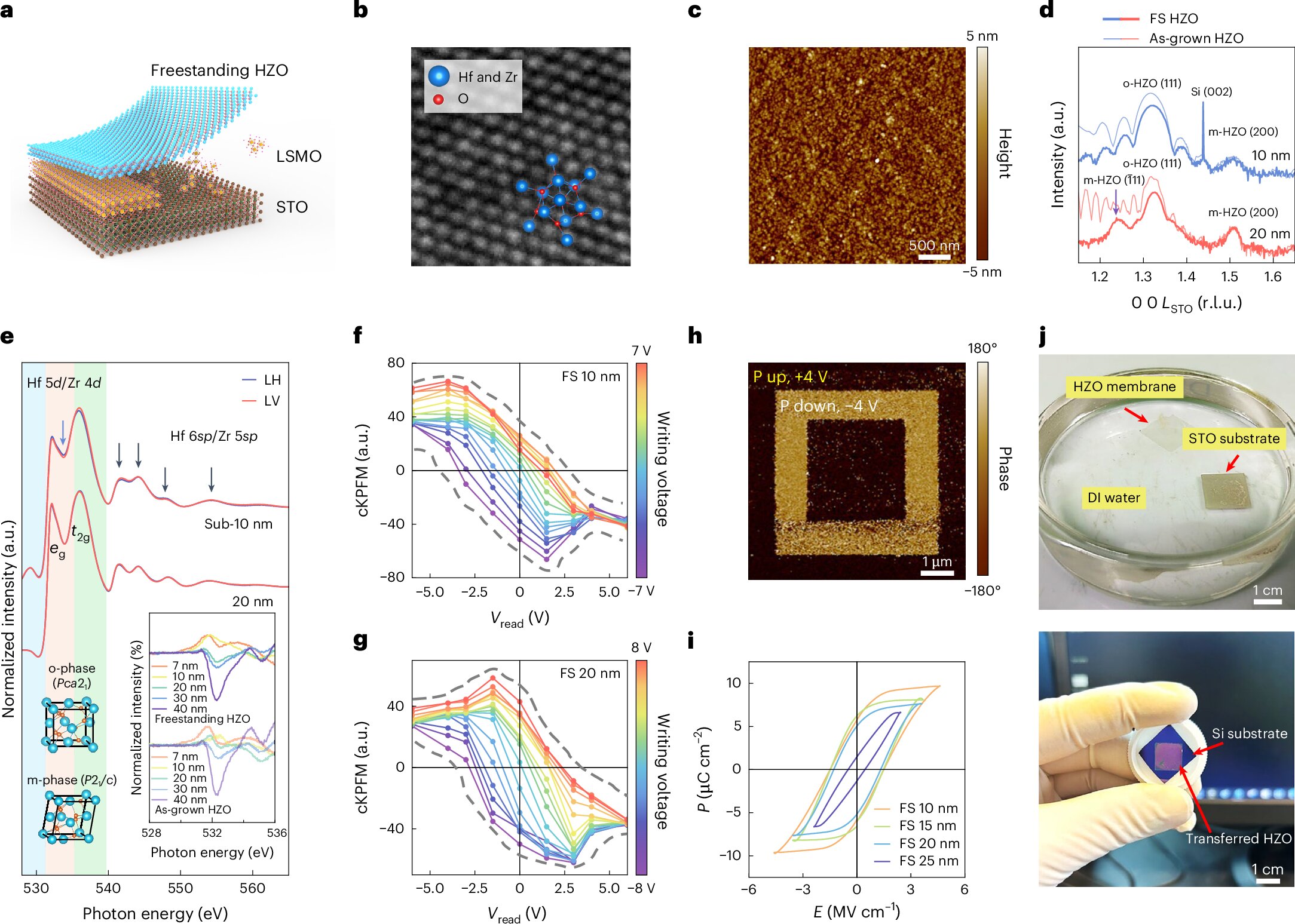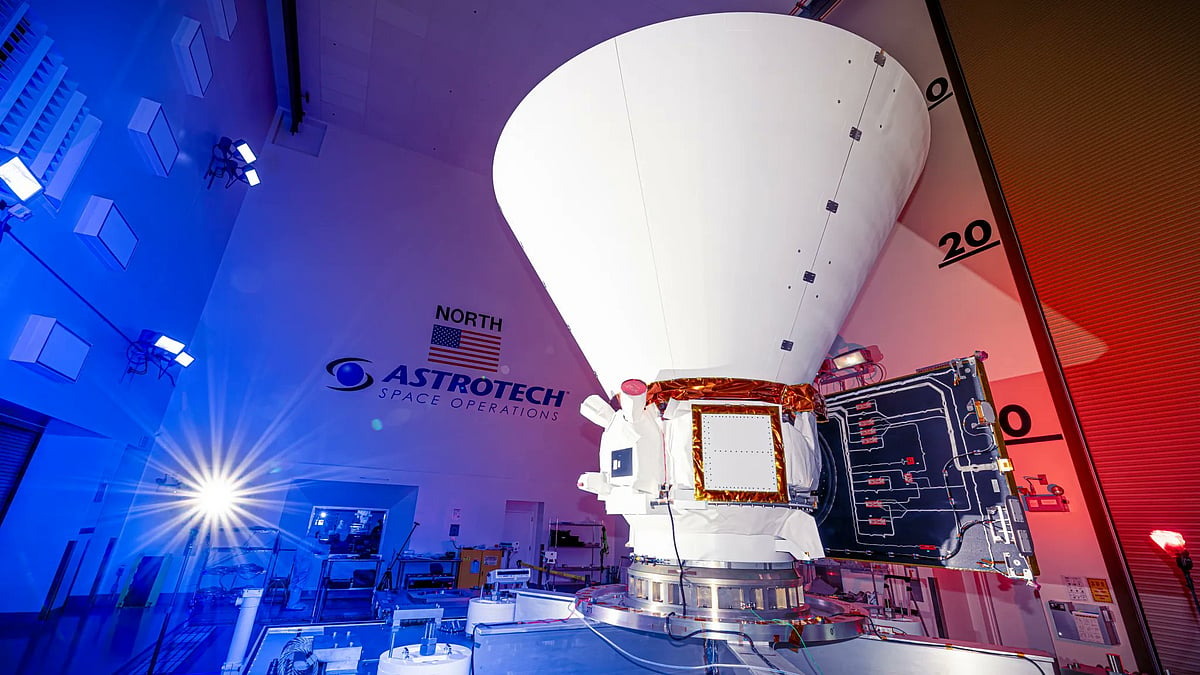
Fabrication and characterization of ferroelectric freestanding hzo membranes. Credit: Nature Electronics (2025). Doi: 10.1038/s41928-025-01398-Y
To further reduce the size of electronic devices, while also also improves their performance and energy Efficiency, Electronics Engineers Have Been Trying to Identary Materials Outperform silicon and other conventional semiconductors. Two-Dimensional (2D) Semiconductor, Materials that are just a few atoms thick and have a tunable electrical conducttivity, are amon the Most Promising Candidates for the Fabrication of Smaller and Better Peerforming Devices.
Past Studies Showed that these Materials Cold be used to fabricate miniaturized transistors, Electronic components that amplife or switty signals, particularly filed-effects Transistors (fets). These are transistors that control the flow of electrical current using an Electric Field.
To reliably operate, however, fets also need to integrate an insulating layer that separates the so-called gate electrode (IE, the terminal regulating the flow of current) Through which electrical current flows). To enable green control over the gate, this insulating layer, Known as a gate dielectric, should have a high dielectric constant (κ), or in other words, iter words, it short Energy.
Unfortunately, reliably integrating 2D semiconductors with high-κ insulators have so far provided different. This, Along with other technical challenges, is currently preventing the widespread adoption of fets based on 2D materials.
Researchers at National Chung HSING, Kansai University, National Cheng Kung University and Other Institutes recently introduced a new strategy to reliable use free use membranes made of hafnium zironmonium oxide (HF0.5ZR0.5O2Hzo) as high- κ gate dielectrics in 2D fets. Their proposed approach, outlined in a paper Published in Nature ElectronicsOpenes new possibilities for the creation of small and energy-efficient transistors, as well as highly performing logic-in-memory systems.
“2D semiconductors out be used as a channel material in miniaturized transistors with high gate control,” Wrote che-yi lin, bo-cia chen and their colleagues in his paper. “However, the Lack of Insulators that are bot compatible with two-dimensional materials and suitable for integration into a fullly scalable process Flow Limits Development.0.5ZR0.5O2 Or Hzo Membranes can be integrated with two-dimensional semiconductors as a high-κ dielectric. “
As part of their study, the researchers first created freestanding hzo-spoiled membranes. In this context, the term ‘Freestanding’ means that the membranes do not need to be directed to a substrate, but can instead be transferred onTo ITO it.
“The Hzo Membranes can be varied in thickness from 5 to 40 nm, and be transferred onto molybdenum disulfide (MOS2) To create the top-Gate Dielectric in Field-Effect Transistors, “Wrote the Authors.
“A 20-nm-thick hzo membrane exhibits a dielectric constant of 20.6 ± 0.5 and a leakage current (at 1 mV CM—1) of under 2.6 × 10—6A cm—2 Below the requirements of the International Technology Roadmap for Semiconductors, as well as typical ferroelectric behavior. The mos2 Transistors with hzo dielectric exhibit an on/off ratio of 109 And a subthareshold swing below 60 mV Dec—1 Across Four Orders of Current. “
To demonstrate the potential of their fabrication strategy, the resultars used it to successfully create a variety of electronic components. The resulting devices were found to perform remarkably well, outperforming many 2D semiconductor-based electronic components developed in the past.
“We use the transistors to create an inverter, logic gates and a 1-bit full adder circuit,” Wrote the Author. “We also create a mos2 Transistor with a channel length of 13 nm, which exhibits an on/off ratio of over 108And a subthareshold with 70 mV Dec—1,
This Recent Study by Che-Yi Lin, Bo-Cia Chen and Their Collegues, and the New Approach they Introduced, Cold Contribute to the Advancement of Transistors and other devices based on 2D SEMICONDUCOTORS. As part of their future studies, the reserchers also their approach, while also further assessing its reliability and compatibility with existing electronics manufacturing proyseseses.
Written for you by author Ingrid fadelliEdited by Gaby clarkAnd Fact-CHACKED and Reviewed by Robert egan—This article is the result of careful human work. We relay on readers like you to keep independent science counalism alive. If this reporting matters to you, please consider a donation (especially monthly). You’ll Get an ad-free Account as a Thank-You.
More information:
Che-Yi lin et al, integration of freestanding hafnium zirconium oxide membranes into two two-dimensional transistors as a high-κ ferroelectric dielectric, Nature Electronics (2025). Doi: 10.1038/s41928-025-01398-Y,
© 2025 Science X Network
Citation: Freestanding Hafnium zirconium oxide membranes can enabled 2D transistors (2025, July 31) retrieved 31 july 2025 from hts
This document is Subject to copyright. Apart from any Fair Dealing for the purpose of private study or research, no part may be reproduced without the written permission. The content is provided for information purposes only.



